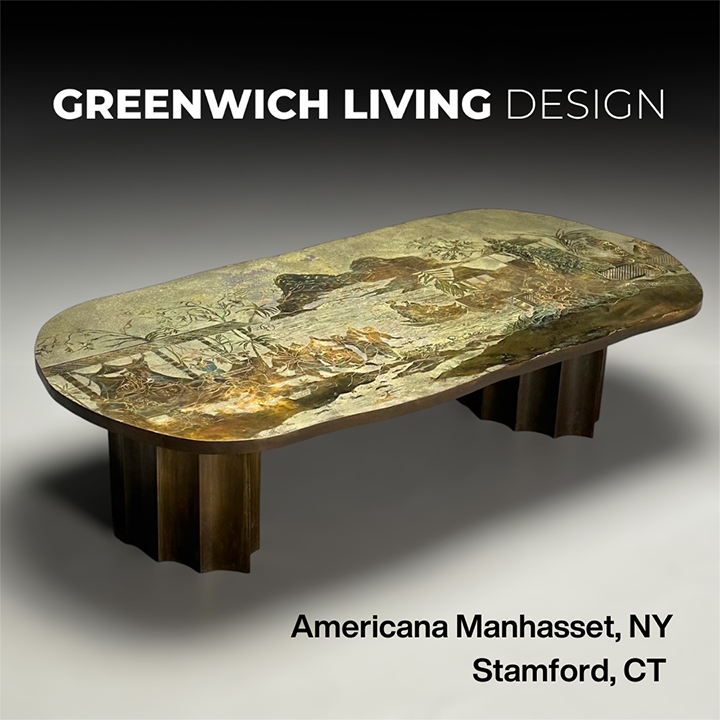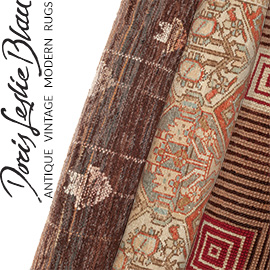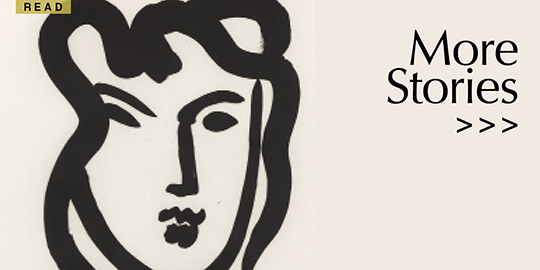Sandor Bernath
American, 1892 - 1985
Sandor Bernath emigrated from Hungary to the United States as a young man. He divided his time between New York City and Eastport, Maine. Upon arrival in New York he set out on his career as a watercolorist, and later he divided his time between the city and Eastport, Maine. An illustrator and painter, Bernath is best known for his polished watercolors of sailing yachts, but he also painted genre and village scenes, birds, and coastal views. His early career remains a bit of a mystery, however at some point he was a student of Edward Hopper; there is evidence of his having traveled abroad in the subject matter of his watercolors from the early 1920s; and by 1922 he had already been the subject of a one-man show at Mrs. Malcolm’s Gallery on East Sixty-Fourth Street.
During the 1920s he exhibited in New York, but spent much of his time at the artist communities in Maine and Massachusetts, where the New England wilderness and seascapes gave him inspiration that would last a lifetime. Bernath moved to Maine permanently in 1927, and spent many decades capturing its beautiful scenery.
He was a member of the New York Watercolor Club and the American Watercolor Society, as well as the Brooklyn Society of Modern Artists. His work was exhibited at the Brooklyn Museum of Art and the Art Institute of Chicago. Some of his paintings are in the collection of the Brooklyn Museum, which featured them in its 1984 publication, American Watercolors, Pastels and Collages.
During the 1920s he exhibited in New York, but spent much of his time at the artist communities in Maine and Massachusetts, where the New England wilderness and seascapes gave him inspiration that would last a lifetime. Bernath moved to Maine permanently in 1927, and spent many decades capturing its beautiful scenery.
He was a member of the New York Watercolor Club and the American Watercolor Society, as well as the Brooklyn Society of Modern Artists. His work was exhibited at the Brooklyn Museum of Art and the Art Institute of Chicago. Some of his paintings are in the collection of the Brooklyn Museum, which featured them in its 1984 publication, American Watercolors, Pastels and Collages.
Best known for his watercolors of sailing yachts executed in a crisp, Precisionist style, Sandor Bernath was born in Hungary and lived in Budapest before immigrating to New York. By 1918, he had begun to establish himself in the art life of the city. Although slightly younger than Edward Hopper and the Precisionist painters, Charles Sheeler and Charles Demuth, Bernath adopted both their aesthetic and subject matter. He made his professional debut in 1922, in a solo show at Mrs. Malcolm's Gallery on East 64th Street. The exhibition of nineteen watercolors included both New York and European subjects, indicating that Bernath had spent time abroad. In 1923, he turned his attention to seascapes of the New England coastline. During the twenties, he became a member of the New York Water Color Club, American Water Color Society, and Brooklyn Society of Modern Artists, and exhibited at the Whitney Museum and Art Institute of Chicago. Like many of his peers, Bernath worked as a teacher and illustrator to support himself. In the late 1920s, he moved to Eastport, Maine, where he continued to live until at least 1945. According to one source, he spent the last years of his life in South America and died in Belize in 1984.
While Eastport remained his primary residence, Bernath visited and painted in a number of American art colonies, including Provincetown on Cape Cod, producing streetscapes and architectural views reminiscent of Edward Hopper. In 1935, he traveled to Taos, New Mexico, and painted the church at Rancho de Taos as well as a pink adobe structure surrounded by desert blooms. Bernath visited Charleston, South Carolina in 1937. Like many artists, including Hopper, he was drawn to its rural cabins, moss-hung trees, historic churches and Civil War monuments. Accordingly, he approached the subject of The Battery with a cool palette and smoothly delineated forms. Although the sky is restricted to a small area, it is full of weather, and in it, Bernath reveals his sensitivity to a particular place, season and atmosphere. NRS
Biography courtesy of The Charleston Renaissance Gallery, www.antiquesandfineart.com/charleston
While Eastport remained his primary residence, Bernath visited and painted in a number of American art colonies, including Provincetown on Cape Cod, producing streetscapes and architectural views reminiscent of Edward Hopper. In 1935, he traveled to Taos, New Mexico, and painted the church at Rancho de Taos as well as a pink adobe structure surrounded by desert blooms. Bernath visited Charleston, South Carolina in 1937. Like many artists, including Hopper, he was drawn to its rural cabins, moss-hung trees, historic churches and Civil War monuments. Accordingly, he approached the subject of The Battery with a cool palette and smoothly delineated forms. Although the sky is restricted to a small area, it is full of weather, and in it, Bernath reveals his sensitivity to a particular place, season and atmosphere. NRS
Biography courtesy of The Charleston Renaissance Gallery, www.antiquesandfineart.com/charleston
Sandor Bernath
Born, Hungary, 1892
Died, 1984
Sandor Bernath was born in Hungary in 1892, but emigrated to the United States as a youth. In the early 1920's, Bernath was an up and coming artist in New York City. He became a member of the American Watercolor Society and the Brooklyn Society of Modern Artists. Bernath was also a student of Edward Hopper. Little is known about his education and training, but several works produced around 1922 prove that Bernath was studying abroad in France and Czechoslovakia.
His last show on record was in Brooklyn during 1927. After that, his whereabouts have been speculated to include: Maine, Pennsylvania, South America and New Mexico. It is thought that Bernath followed his contemporaries to Taos. His last listed address was found in Maine in 1945, but Sandor Bernath lived until 1984.
Studied: National Academy of Design
Member: American Watercolor Society; New York Watercolor Club
Exhibited: Art Institute of Chicago, 1923-1925, 1927; Whitney Museum of American Art, 1923-1926
Works Held: Brooklyn Museum
Further Reading: Biographical Encyclopedia of American Painters, Sculptors & Engravers of the U.S., Vol. 1. Howard Creps et al. Dealers Choice Books: 2002.; Mantle Fielding's Dictionalry of American Painters, Sculptors & Engravers, 2nd Edition, Apollo, Poughkeepsie, NY: 1987.; Who Was Who in American Art 1564-1975: 400 Years of Artists in America, Vol. 1. Peter Hastings Falk, Georgia Kuchen and Veronica Roessler, eds.,Sound View Press, Madison, Connecticut, 1999. 3 Vols.
Biography courtesy of David Cook Galleries, www.antiquesandfineart.com/davidcook
Born, Hungary, 1892
Died, 1984
Sandor Bernath was born in Hungary in 1892, but emigrated to the United States as a youth. In the early 1920's, Bernath was an up and coming artist in New York City. He became a member of the American Watercolor Society and the Brooklyn Society of Modern Artists. Bernath was also a student of Edward Hopper. Little is known about his education and training, but several works produced around 1922 prove that Bernath was studying abroad in France and Czechoslovakia.
His last show on record was in Brooklyn during 1927. After that, his whereabouts have been speculated to include: Maine, Pennsylvania, South America and New Mexico. It is thought that Bernath followed his contemporaries to Taos. His last listed address was found in Maine in 1945, but Sandor Bernath lived until 1984.
Studied: National Academy of Design
Member: American Watercolor Society; New York Watercolor Club
Exhibited: Art Institute of Chicago, 1923-1925, 1927; Whitney Museum of American Art, 1923-1926
Works Held: Brooklyn Museum
Further Reading: Biographical Encyclopedia of American Painters, Sculptors & Engravers of the U.S., Vol. 1. Howard Creps et al. Dealers Choice Books: 2002.; Mantle Fielding's Dictionalry of American Painters, Sculptors & Engravers, 2nd Edition, Apollo, Poughkeepsie, NY: 1987.; Who Was Who in American Art 1564-1975: 400 Years of Artists in America, Vol. 1. Peter Hastings Falk, Georgia Kuchen and Veronica Roessler, eds.,Sound View Press, Madison, Connecticut, 1999. 3 Vols.
Biography courtesy of David Cook Galleries, www.antiquesandfineart.com/davidcook
Sandor Bernath was born in Hungary. He immigrated to the United States and settled in New York, where he studied at the National Academy of Design and began to emerge as an artist during the 1920s. Bernath, who supported himself as a teacher and illustrator, seems to have traveled widely and was active in Eastport, Maine, and Provincetown, Massachusetts. A member of the New York Water Color Club and the American Water Color Society, he exhibited at the Art Institute of Chicago from 1923 to 1925 and 1927, and at the Whitney Museum of American Art from 1923 to 1926. Bernath is especially noted for his watercolor views of the Southwest, including Taos, New Mexico.
Biography courtesy of Schwarz Gallery, www.antiquesandfineart.com/schwarzphila
Biography courtesy of Schwarz Gallery, www.antiquesandfineart.com/schwarzphila
Sandor Bernath was born in Hungary on December 30th, 1892, far removed from the New England coast and the Yankee sailing ships that would become his favorite subjects. He immigrated to New York either in his teens or early twenties, and began there a career in watercolor that flared with the urban lights of the Jazz Age before dissipating into the pastoral and, eventually, the unknown.
In the landmark exhibition catalogue, Sandor Bernath: Watercolors, issued by the Smith Gallery of New York, Jennifer Krasinski suggests that Bernath's January, 1922 solo exhibition at Mrs. Malcolm's Gallery on East 64th Street served as the artist's mainstream debut. In fact, he had exhibited prominently before, displaying In a Studio at the 52nd Annual Exhibition (1919) of the American Water Color Society, Late Afternoon at the 54th Exhibition (1921), and Down Town Through Bridge the following December at the inaugural combined exhibition of the New York Water Color Club and American Water Color Society. That said, Krasinski speaks to the import of Bernath's 1922 solo show at Mrs. Malcolm's:
Although little is known about Bernath's education and early training, this exhibition of nineteen watercolors included works which suggest that by 1922, the artist had traveled and studied abroad. Coast of Normandy and Shrine, Checho-Slovakia are two works the subjects of which certainly resulted from time spent in Europe.
The following year, Bernath increased his exposure, showing five works (Surf, Saw-Tooth, Sea and Fog, Grand Manan Coast, and Storm Beaten Coast) at a subsequent combined annual exhibition of the New York Water Color Club and American Water Color Society. Later in 1923 he showed six works (Flowers, Maine Coast, Tree Forms, Late Afternoon, Surf, and Storm King) at the 2nd Exhibition of Water Color Paintings, Drawings, and Sculpture by American and European Artists, hosted by the Brooklyn Museum. The Brooklyn Museum eventually purchased Surf and displayed it in their 1924 show, Loan Exhibition of Brooklyn Art Treasures and Original Drawings by American Artists. Krasinski adds:
Bernath, it seems, was in excellent company at these Brooklyn exhibitions for in 1923, the museum also purchased The Mansard Roof, a watercolor painted after a homestead in Maine by another young artist, Edward Hopper.
Hopper, in part with John Marin, dominated the American watercolor scene of the early 20th century. Along with Bernath, all three artists shared an affinity for the Maine coast and later, in the case of Marin and Bernath, with the light of the American southwest. Perhaps because of their shared subject matter, in combination with the fact that both Hopper and Marin arrived on the New York art scene slightly earlier, Bernath has been unfortunately subordinated to the two. But in terms of talent and execution, the artwork offered in the present collection demonstrates that such judgment is unwarranted and, when compared to Hopper's isolation and Marin's visual fragmentation, Bernath is more successful at representing a true sense of the American seaside pastoral.
In 1923, Bernath debuted at the International Water Color Exhibition, hosted by the Art Institute of Chicago, and participated in the event again in 1924 and 1925. He exhibited at the Whitney Studio Club in 1923, 1924, and 1926, alongside Hopper and other noted contemporaries. In 1926, he exhibited once more at the combined New York Water Color Club and American Water Color Society show. Bernath's last known exhibition occurred in 1927, when he showed Grand Manan, N.B., Pike's Barn, Snow, and Snowbound in a Brooklyn Museum show of watercolors, pastels, and drawings by European and American artists.
Hopper and Marin survived the Great Depression as recognized pillars of the American art scene. Bernath, in contrast, retreated mysteriously from their ranks. Until recently, the last known biographical detail about his life consisted entirely of a 1945 American Water Color Society address listing that placed him in Eastport, Maine. Recent correspondence by the Cooley Gallery with the artist's family confirms the persistent rumor that Bernath emigrated to South America. According to his granddaughter's husband, Bernath moved to Belfate, Honduras in the early 1970s, where he built his wife a beach house with a view of the spot where Columbus made landfall in the New World. He continued to paint and passed away either in 1984 or 1985.
The watercolors offered here capture the elegant aggressiveness of New England ships under sail, along with the quiet peacefulness found at the margins of coastal life. Sandor Bernath deserves a place alongside the best of America's 20th century watercolorists, and we are pleased to present this collection.
References
Goodrich, Lloyd. Edward Hopper (New York: Harry N. Abrams, 1976), p.27.
Krasinski, Jennifer. Sandor Bernath: Watercolors (New York: The Smith Gallery, [ca.1995]), p.[2].
The Annual & Biennial Exhibition Record of the Whitney Museum of American Art, 1918-1989 (Madison: Soundview Press, 1991), p.9-13,87.
Wilson, Raymond. Index of American Watercolor Exhibitions, 1900-1945 (Metheun: Scarecrow Press, 1994), p.75,87,93.106,114,231,263,267,273.
















